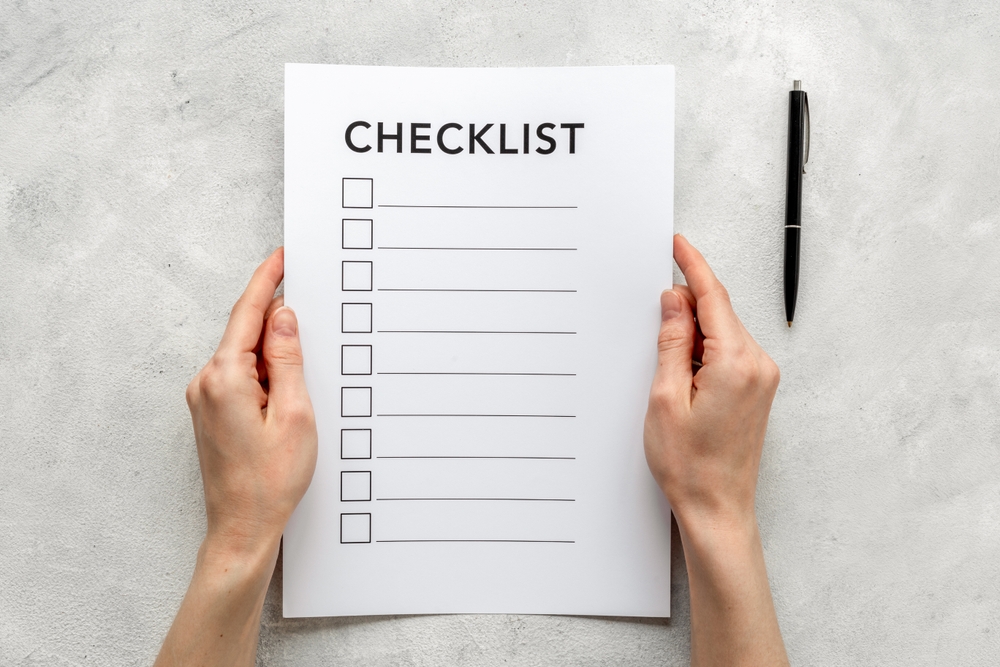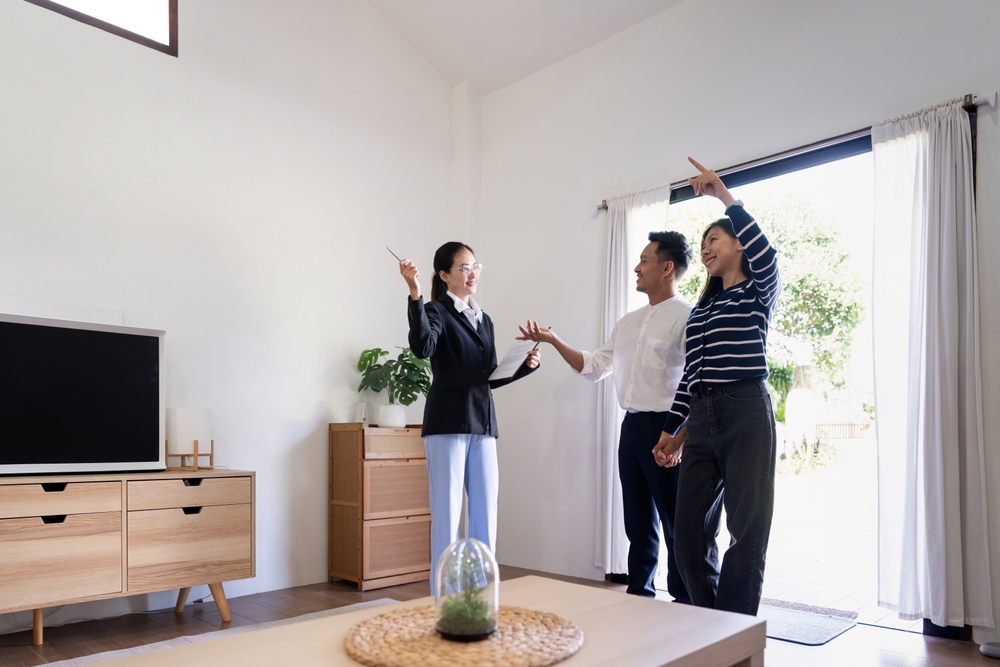Quick– name the things you can’t live without in a new home. What are the first things that come to mind? Granite countertops, spa-like bathrooms, and open-concept layouts? But before you let your imagination run wild, it’s important to separate what you need in a home from what you want and what’s a must-have. Clearly identifying these categories will help you stay focused, stick to your budget, and make a smart decision that suits both your lifestyle and long-term goals.
Defining what you need will save you time because you can cross homes that don’t meet your needs off the list without visiting. More importantly, it will help you compare the homes that visit when you are not swept up with emotion and are confused by the features of multiple houses when you have seen many.
After visiting each house, quickly go through your checklist and see how the house measures up against your needs. Later, when you are comparing options, you can see how the houses line up against your needs, wants, and must haves.
In this guide, we’ll walk you through how to define your needs, wants, and must-haves when house hunting, and we’ll include a helpful checklist you can use to stay organized throughout the process.
Understanding Needs, Wants, and Must-Haves

Before diving into specifics, let’s define what each category means:
- Needs – These are non-negotiable features that you require for your home to be functional and safe. Without them, the home wouldn’t meet your basic living requirements and you would not consider purchasing.
- Wants – These are features that would be nice to have but aren’t essential. They can enhance your quality of life or add convenience, but you can live without them if necessary.
- Must-Haves – Must-haves fall somewhere between needs and wants. They’re features you feel strongly about and might be willing to stretch your budget for, but they aren’t absolute dealbreakers.
Step 1: Identify Your Needs
The first step in deciding what you need in a home is understanding your lifestyle and the practical requirements that come with it. These are the essentials that will directly impact how comfortably you can live in the house.
Basic Living Requirements
At a minimum, you need a home that provides adequate space for your household. Think about the number of bedrooms and bathrooms you require. For example, if you have a family of four, a three-bedroom, two-bathroom home might be a necessity. If you work from home, you may also need a dedicated office space to maintain productivity.
In addition, consider location as a critical need. Proximity to work, schools, healthcare, and essential amenities should be factored into your decision. If you have a dog, you might consider a fenced yard to be a requirement. With school-age children, living in a good school district or on a low traffic street might be non-negotiable.
Safety and Structural Integrity
A home that meets basic safety standards is essential. Make sure to check for things like a sound foundation, functional plumbing and electrical systems, and compliance with local building codes. Even if the house looks great on the surface, a thorough inspection is crucial to ensure it’s structurally sound.
Tip: Here is a list of potential problems to keep an eye out for. While any of these could be simple cosmetic problems, you want to verify before moving forward.
- Cracks in walls, floors, ceilings, window glass, or chimneys
- Bulging or uneven walls and ceilings
- Visible cracks along staircases
- Soil pulling away from the foundation
- Windows or doors that stick or don’t close properly
- Floors that sag, slope, or feel uneven
- Roof issues, such as sagging or leaking
- Rotted or deteriorating subfloors
- Crumbling bricks, concrete, or masonry
- Dampness or moisture buildup in crawl spaces
- Poor drainage around the foundation
- Mold, mildew, or musty odors
Step 2: Determine Your Wants
Once you’ve outlined your needs, it’s time to think about the features that aren’t essential but would improve your lifestyle or make your home more enjoyable.
Comfort and Aesthetics
Wants often fall into the category of comfort or aesthetics. For example, you might prefer hardwood floors over carpet, or you may want a walk-in closet in the master bedroom. While these features can enhance your living experience, they aren’t necessary for the home to be functional.
Think about the layout of the home as well. An open floor plan might be on your wish list, but if you find a home with a more traditional layout that meets your needs, it’s worth considering.
Outdoor Spaces
Outdoor features like a large backyard, a deck, or a pool often land on the “want” list. While they can increase your enjoyment of the property, they might not be crucial for everyone. If outdoor space is important to you, decide whether it’s something you can add later or if it’s worth prioritizing during your search.
Step 3: Define Your Must-Haves
Must-haves are those features that aren’t strictly essential but are very important to you. They might not be as basic as needs, but they can be dealbreakers if a home doesn’t have them.
Lifestyle-Specific Features
If you have a specific hobby or lifestyle requirement, this might dictate some must-haves. For example, if you’re a chef or enjoy cooking, a well-equipped kitchen with ample counter space might be a must-have. If collect cars, a three car garage might be high on your list.
Long-Term Considerations
Think about what you’ll need in the future. If you plan to expand your family, having an extra bedroom or additional living space could be a must-have. Similarly, if you’re nearing retirement, you might prioritize a single-story home to avoid stairs.
Balancing Needs, Wants, and Must-Haves

When house hunting, it’s important to stay realistic and flexible. While it’s great to have a long wish list, you may not find a home that checks every single box. That’s where understanding the difference between needs, wants, and must-haves becomes critical.
Prioritizing Features
Start by ranking your needs, wants, and must-haves in order of importance. This will help you make quick decisions when evaluating properties. If you find a home that meets all your needs and has a few must-haves, it might be worth sacrificing some of your wants.
Staying on Budget
One of the biggest challenges in home buying is staying within your budget. It’s easy to fall in love with a home that has all your wants and must-haves but exceeds your financial limits. Stick to your budget by focusing on your needs first, and then consider how many of your wants and must-haves the home offers.
Tip: Use a home affordability calculator like Bankrate’s Home Affordability Calculator to determine how much home you can afford before starting your search.
Tips for Staying Organized
- Use a Checklist:
Print out a checklist like this one to bring along when you tour homes. It will help you objectively compare properties and keep track of which ones meet your criteria. - Be Prepared to Compromise:
Very few homes will meet 100% of your needs, wants, and must-haves. Decide in advance which items you’re willing to compromise on and which are truly non-negotiable. - Understand Easy Fixes: Don’t be put off by a home that does not match your personal style. Painting and changing flooring are generally easy fixes that you can manage after closing. Changing bathroom or kitchen layouts or structural changes often are not.
- Consult with a Real Estate Professional:
A knowledgeable real estate agent can help you find homes that match your criteria and may even suggest options you hadn’t considered.
Common Mistakes to Avoid
- Ignoring Your Needs:
It’s easy to get swept up by a home that looks beautiful but doesn’t meet your essential needs. Don’t sacrifice functionality for aesthetics. - Overprioritizing Wants:
While it’s natural to want a home that has everything on your list, focusing too much on wants can lead to overspending or missing out on great properties that meet your needs. - Forgetting Future Needs:
Think long-term when house hunting. A home that fits your current lifestyle perfectly might not work as well if your circumstances change in a few years.
When buying a home, understanding the difference between needs, wants, and must-haves is crucial to making a smart decision that works for you. By clearly defining these categories, you’ll be better equipped to stay on budget, prioritize what matters most, and find a home that fits both your current lifestyle and future goals. Use checklists and affordability calculators to stay organized and on track throughout the process.
Remember, while it’s important to dream big, staying grounded and practical will ultimately lead you to the right home—one that meets your essential needs while offering room for some of your favorite wants and must-haves.


